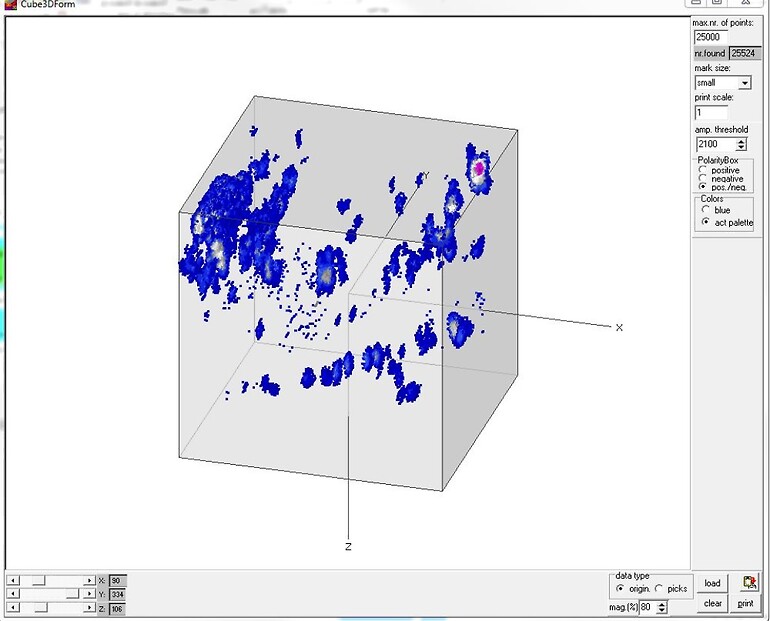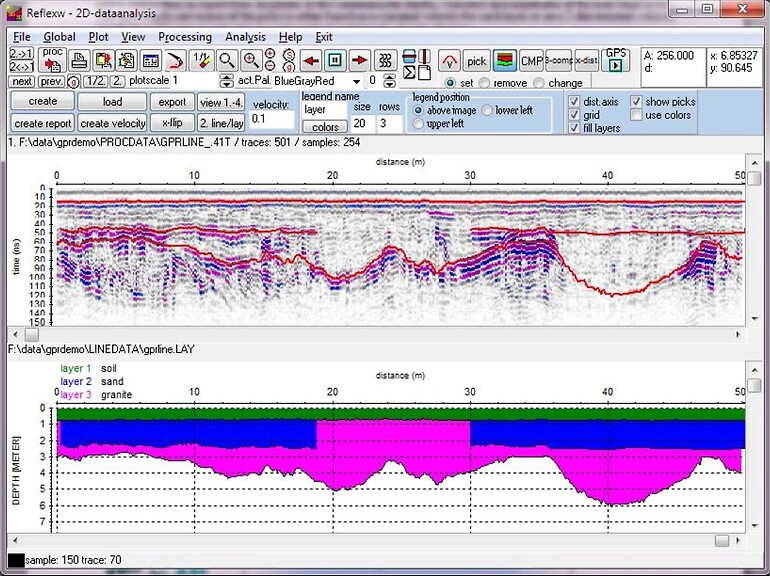Reflex-W
from Sandmeier Software
Reflex-W is a near surface geophysical software programme which allows the user to process and interpret wave data, commonly used to interpret 2D and 3D Ground Penetrating Radar (GPR) or Seismic datasets (i.e reflection, refraction, tomography and crosshole). Reflex-W is the complete software package which includes Reflex 2D and 3D allowing the user to easily import data from a number of formats including SEG-Y, SEG2 and is compatible with a wide variety of GPR systems/formats including GSSI, RAMAC, Pulse-Ekko, Utsi, RAMAC etc.). 2D Radargrams can be processed in single files or batch files by editing, static correction, deconvolution etc. The user will also be able to pick the first arrivals, conduct single-shot processing and conduct a velocity analysis of the data. Reflex-W also allows you to process your data from your 2D radargrams into a complete 3D dataset in the XY plane and can be displayed or tracked in X, Y or Z slices (Cube display).

Reflex 3D scan is also available for Reflex-W users. When interpreting the 3D data, the precondition is that the data must have been acquired along equidistant parallel 2D-lines on a regular rectangular grid. This means that the trace increment in one direction (x or y), the start position of the 2D-lines and the scan increment between the 2D-lines must be equal. The data may have been stored on individual 2D-files or within a 3D-file. If stored within a 3D-file the end-positions of the internal 2D-lines must be identical in addition as well as the number of traces into profile direction. The trace increment must be given within the original data.

Features:
. Direct import from different formats.
. Easy change of the distance scaling and the geometry.
. Standard processing with predefined default parameters which can be manually changed.
. Different display possibilities like point or wiggle mode, scaling and zooming functions.
. Printing the profiles with free scaling.
. Interactive velocity adaptation for zero-offset, single shot. (reflection and refraction) or VSP data.
. Picking the onsets and combine the picked phases to a layer model.
. Export the data to other formats like SEGY, SEG2.
. It is possible to start the program twice for a comparison of two different datasets. Consequently, you are also able to compare a processed dataset with the original dataset.
Data Sheet
- Reflex-W Datasheet (PDF)
